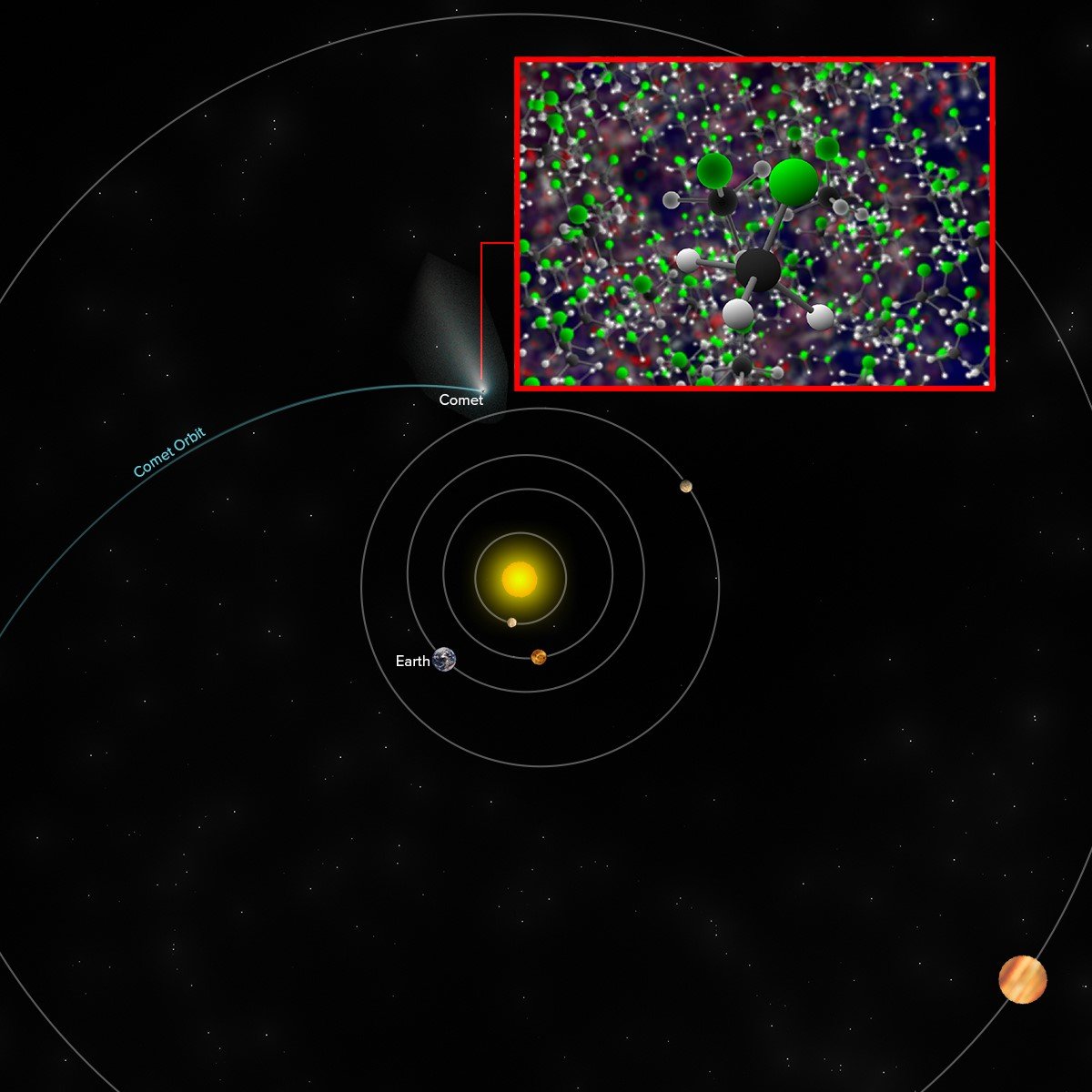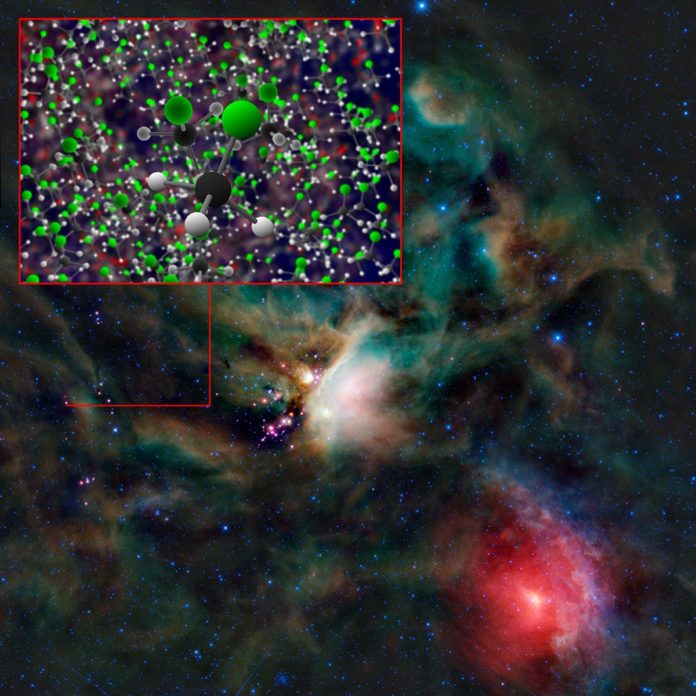Astronomers recently discovered the faint molecular fingerprint of methyl chloride around an infant star system known as IRAS 16293-2422. The discovery was done by using Atacama Large Millimeter/submillimeter Array (ALMA).
IRAS 16293-2422 is a collection of several infant stars, or protostars, each about the same mass as our Sun. On the other hand, the Methyl Chloride found around it, is one of a class of molecules known as organohalogens.
Lead author Edith Fayolle, a researcher with the Harvard-Smithsonian Center for Astrophysics (CfA) in Cambridge said, “Finding organohalogens near these young, Sun-like stars was surprising. We simply didn’t predict its formation and were surprised to find it in such significant concentrations. It’s clear now that these molecules form readily in stellar nurseries, providing insights into the chemical evolution of solar systems, including our own.”

NRAO/AUI/NSF
Although, the observation brings disappointment for the astrobiologists who suggested methyl chloride would be the indicator of alien life. The detection indicates that methyl chloride forms naturally in interstellar clouds and ride out long enough to become part of a forming solar system.
Karin Öberg, an astrochemist at CfA said, “The discovery also suggests that something about the starting conditions for organic chemistry on planets. Such chemistry is an important step toward the origins of life. Based on our discovery, organohalogens are likely to be a constituent of the so-called ‘primordial soup,’ both on the young Earth and on newly formed rocky exoplanets.”
ALMA detects radio signals commonly emitted by molecules in space. Each molecule has a distinctive fingerprint in the radio spectrum. Furthermore, by using the Rosetta spacecraft, scientists were able to detect the molecule in the atmosphere of comet 67P/C-G using the onboard instrument known as the Rosetta Orbiter Sensor for Ion and Neutral Analysis (ROSINA).
Kathrin Altwegg with the University of Bern, Switzerland, said, “Using ROSINA, we captured some of the molecules around the comet. We then count them for exquisite precision.”
According to scientists, the observation will support the idea that a young solar system can inherit the chemical makeup of its parent star-forming cloud.
Fayolle said, “This does, however, raise the question: How much of the comet’s organic content is directly inherited from the early stages of star formation? Additional searches for organohalogens around other protostars and comets need to be undertaken to help find the answer.”
The study is published in Nature Astronomy.
